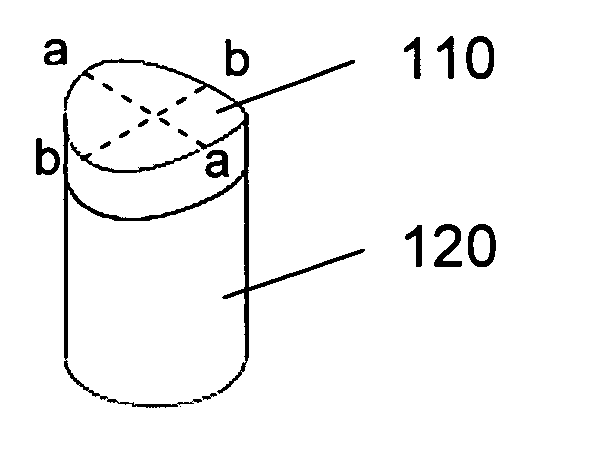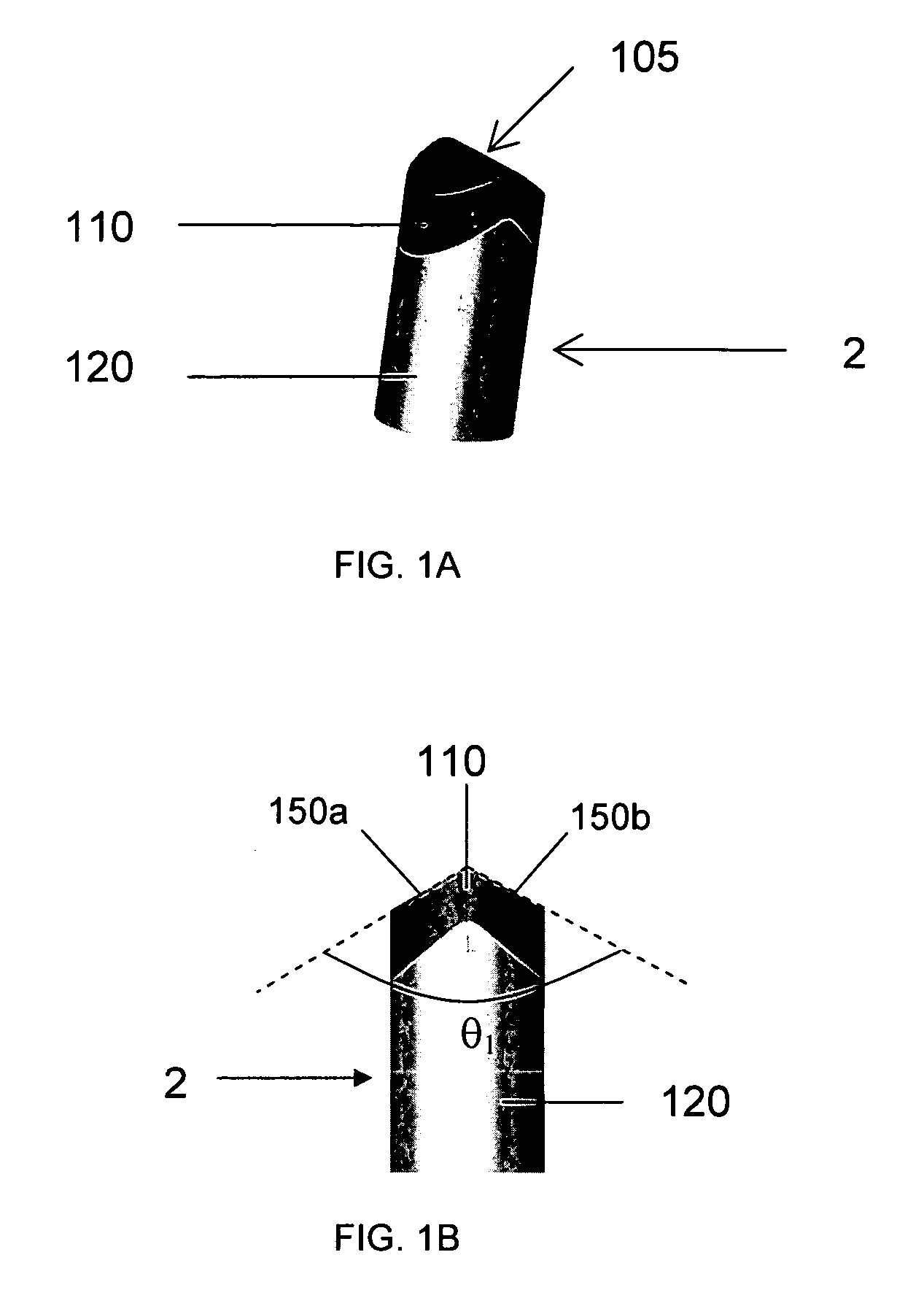Implants and delivery system for treating defects in articulating surfaces
a technology of articulating surface and implants, which is applied in the field of implants and delivery systems for treating cartilage and bone defects, can solve the problems of complex shape of tissue surface in the defect area, and achieve the effect of improving the quality of cartilage and bone repair
- Summary
- Abstract
- Description
- Claims
- Application Information
AI Technical Summary
Benefits of technology
Problems solved by technology
Method used
Image
Examples
example
Dual-Phase Implant Plug
[0132] The dual-phase implant plug has a proximal layer designed to have properties similar to that of cartilage and a distal layer designed to have properties similar to that of bone. Table 3 lists an exemplary composition for the bone phase, while Table 4 lists an exemplary composition for the cartilage phase. The PGA fibers listed in the tables are of poly-glycolic acid. Table 5 lists exemplary physical properties of bone and cartilage phases having the compositions listed in Tables 3 and 4.
TABLE 3Bone phase:ComponentQuantity (vol %)Poly-lactic acid54%PGA Fibers10%Calcium Phosphate35%Surfactant 1%
[0133]
TABLE 4Cartilage PhaseComponentQuantity (vol %)Poly-lactic-co-93% glycolide, 75 / 25PGA Fibers6%Surfactant1%
[0134]
TABLE 5Physical PropertiesBone PhaseCartilage PhasePorosity70%80%Pore size100-600μm80-250μmStrength25MPa1.5MPaStiffness150MPa25MPaPhase thickness12.5mm2.5mm
PUM
| Property | Measurement | Unit |
|---|---|---|
| angle | aaaaa | aaaaa |
| angle | aaaaa | aaaaa |
| angle | aaaaa | aaaaa |
Abstract
Description
Claims
Application Information
 Login to View More
Login to View More - R&D
- Intellectual Property
- Life Sciences
- Materials
- Tech Scout
- Unparalleled Data Quality
- Higher Quality Content
- 60% Fewer Hallucinations
Browse by: Latest US Patents, China's latest patents, Technical Efficacy Thesaurus, Application Domain, Technology Topic, Popular Technical Reports.
© 2025 PatSnap. All rights reserved.Legal|Privacy policy|Modern Slavery Act Transparency Statement|Sitemap|About US| Contact US: help@patsnap.com



